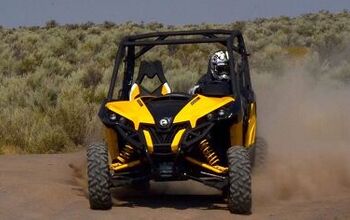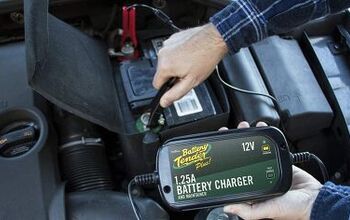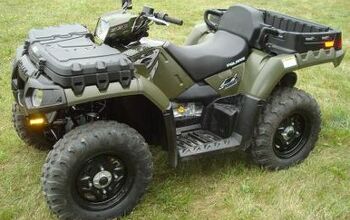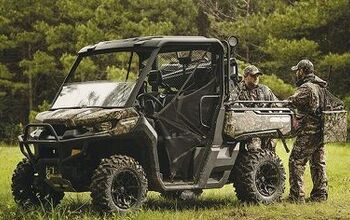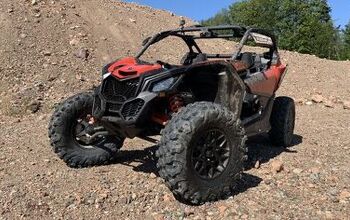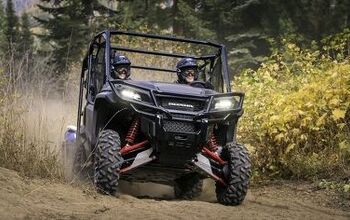Single Vs Twin-Cylinder: Comparing the Two Common ATV Engine Options

Engine choice is perhaps one of the biggest influences on the desired ATV for prospective buyers. Likewise, certain engines, configurations, and characteristics can create long-lasting loyalists to a brand or motor design. This is no clearer in the four-wheeler scene than the distinction between a single cylinder engine and a two or “twin” cylinder engine, commonly arranged in a “V” like that used in motorcycles. Though there are benefits to each, the differences between single and twin-cylinder engines run deep. The distinction between these configurations significantly impacts the performance, smoothness, power delivery, and overall behavior of the engine and machine in which it lives.
First, let’s look at the basics. A single cylinder engine, known in some motorcycle communities as “thumpers,” contains one cylinder with one piston. As you can probably expect, a two or “twin” cylinder engine contains two pistons and two cylinders. Though they can be arranged in a straight configuration, known as a parallel twin setup in the ATV world, twin-cylinder engines tend to be arranged in a “V” for four-wheeler use. Commonly, the angle of the V is 90 degrees, though it can vary. In this instance, the pistons alternate revolutions, using a shared crank pin that joins the two connecting rods.
The single obviously takes the cake on the front of simplicity. This entails a more straightforward design with fewer moving parts, literally one versus two in the case of most parts, which in turn keeps manufacturing, maintenance, and overall ownership costs down. This simplicity makes single-cylinder engines cost-effective in terms of production and maintenance. For reasons like these, companies such as Can-Am are replacing their 650cc-class twin-cylinder 649.6cc engines in machines like the outgoing Outlander 650 with the new 650cc single cylinder featured in the all-new Outlander XT 700.
Power delivery is a massive point of differentiation between singles and twins. Single cylinder motors tend to deliver smooth torque and low RPMs thanks to lower rotating mass and fewer components to get spinning. However, singles are limited in terms of raw power output compared to multi-cylinder engines due to the natural displacement differences, which creates dramatically different peak outputs particularly in higher-performance applications. On the contrary, twin-cylinder engines typically deliver power more smoothly across the rev range, making them suitable for a wider range of applications. Throttle response may be a little slower at the verge of tip-in with two cylinders to get going, but it tends to deliver a more substantial punch once it hits.
Generally in the ATV world with high power production comes lower efficiency, and to an extent that rings true here. Single-cylinder engines can offer excellent fuel efficiency, especially in lightweight vehicles or applications where constant low-speed operation is typical. Lower-stressed machines win big here. However, big twins can take less of an efficiency hit when loaded down with weight or towing a heavy trailer, as the additional horsepower and torque means a less taxed powertrain. Unfortunately, running in low range four-wheel-drive can cause a huge gas mileage falloff in V-Twins.
Smoothness is also a point of disparity. Due to the firing pulses occurring at larger intervals, single-cylinder engines tend to produce more noticeable vibrations and can feel less refined compared to multi-cylinder counterparts, though the singles do tend to vibrate quite a lot at high RPMs and near redline. This can cause discomfort during prolonged use as well as unpleasant sounds and reverberations that can vibrate items attached to the machine (like tools and cargo boxes). Twins, especially those in a 90-degree arrangement, are generally inherently balanced and thus experience less vibration.
In terms of the actual characteristics of the two engines and how the rider’s interaction with a machine is affected by them, the two powerplant choices offer substantially different propositions in how they act and perform. Singles are great for low-speed, high-torque circumstances as they tend to have less weight to push around and get going. They can be revvy, lightweight, sprightly things that are fun to run up and down the rev range with. Twins are the choice for those who demand more power and torque but are willing to deal with the side effects. This is why so many weekend warriors and four-wheeling enthusiasts choose to go with a twin-cylinder, as they feel that if they’re in the hobby they might as well enjoy it to its fullest extent. V-Twins are traditionally powerhouses compared to their single-cylinder counterparts, bringing torque to the party that single cylinders can only dream of. Thanks to this, there’s a lot more punch on tap with two cylinders on board, and the machines tend to be faster and quicker as a result.
In conclusion, the choice between a single-cylinder and twin-cylinder engine depends on various factors, including the intended application, desired performance characteristics, cost considerations, and user preferences. Single-cylinder engines offer simplicity, cost-effectiveness, and torque at low RPMs, while twin-cylinder engines provide smoother operation, better balance, and often more power across the rev range. Both have their strengths and weaknesses, catering to different needs within the ATV industry.

Ross hosts The Off the Road Again Podcast. He has been in the off-road world since he was a kid riding in the back of his dad’s YJ Wrangler. He works in marketing by day and in his free time contributes to Hooniverse, AutoGuide, and ATV.com, and in the past has contributed to UTV Driver, ATV Rider, and Everyday Driver. Ross drives a 2018 Lexus GX460 that is an ongoing build project featured on multiple websites and the podcast and spends his free time working on and riding ATVs.
More by Ross Ballot



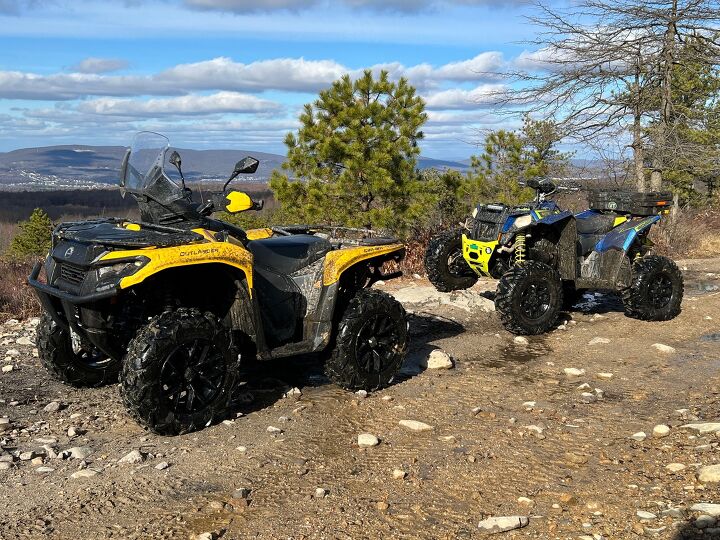











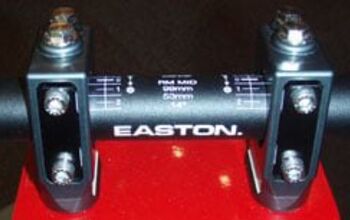
![More ATVs on Ice [video]](https://cdn-fastly.atv.com/media/2022/10/24/8742964/more-atvs-on-ice-video.jpg?size=350x220)


![Unique ATV Tire Bead Breaker [video]](https://cdn-fastly.atv.com/media/2022/10/24/8744118/unique-atv-tire-bead-breaker-video.jpg?size=350x220)

